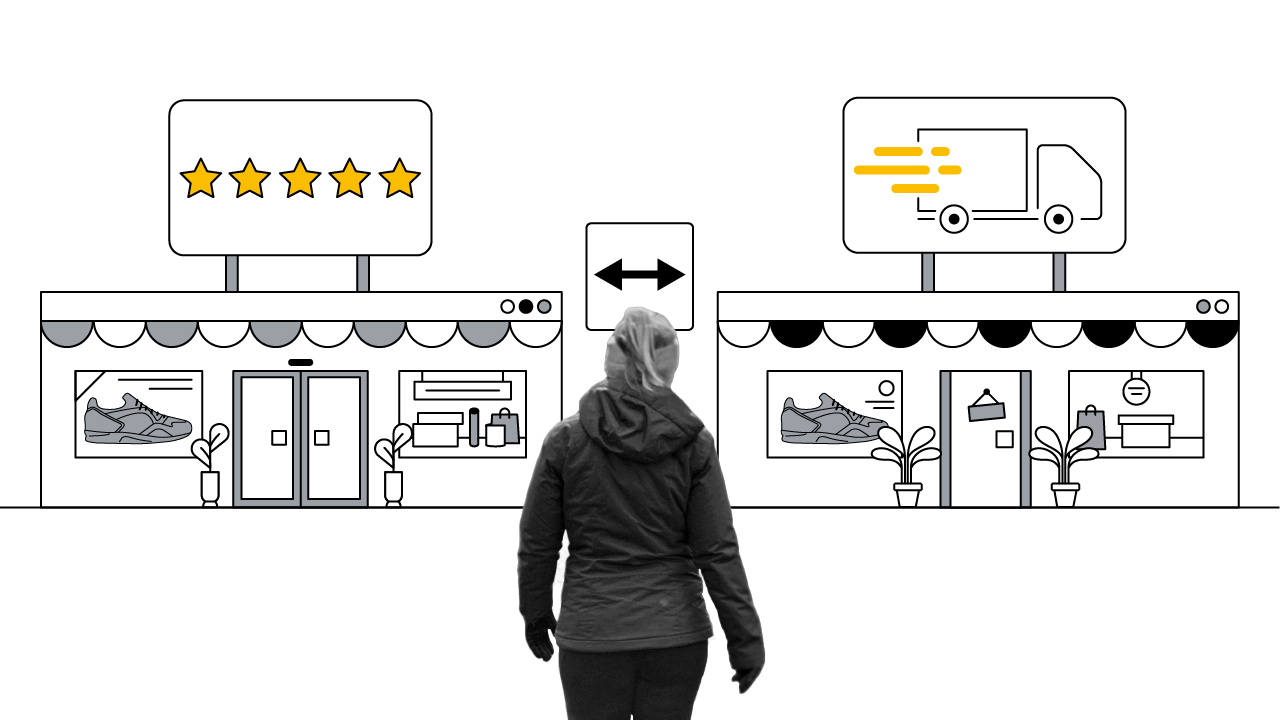The holiday shopping season is already in full-swing for people across Europe, the Middle East, and Africa (EMEA). In fact, 21% of people in the EMEA region started their holiday shopping as early as June, according to new research from Google and Ipsos.1
Following the biggest ever holiday season for digital spending in 2020, the retail landscape continues to shift. COVID-19 has caused logistical challenges, resulting in delivery delays and product scarcity, but the potential release of pent-up demand and people’s excitement about spending the holidays with friends and family this year means there is cause for optimism as well.
To help your brand navigate the 2021 holiday shopping season, here are the early retail trends and consumer behaviours you need to know:
Holiday shopping is starting much earlier

While we have seen the start of the holiday shopping season creep forward over the last few years, in 2021 the festive season was on people’s minds even earlier than before. And 37% of holiday shoppers in EMEA say they will start their shopping earlier than they did last year.2
“Holiday shopping beginning earlier each year means increased competition for retailers, who need to start their festive campaigns much earlier to capture demand from these shoppers — and ensure they stay front of mind,” says Ruth Ballett, retail lead for EMEA marketing at Google. “This means adapting messaging to tap into customer needs and reconsidering the best marketing channels to reach potential customers wherever they are in their holiday shopping journey.”
People preparing early for the festive season is likely a response to their experiences last year, when traditional holiday shopping became challenging due to the pandemic. This year they’re excited to see their friends and family again, and want to get ahead of any potential disruptions.
The impact of COVID-19: From stock shortages to supporting local

The pandemic continues to disrupt people’s lives and their shopping behaviours, with 37% of EMEA consumers saying they expect COVID-19 to impact how they shop this holiday season.3 Some of these effects are smaller and more commonplace these days, such as wearing a mask and social distancing. Others require bigger commitments, such as people becoming more conscious of who they buy from — and when.
Expected scarcity due to supply chain challenges
Pandemic-related supply chain challenges are causing delivery delays and stock shortages for the festive season. This has worried many EMEA holiday shoppers, with 49% saying they will confirm online that an item is in stock before going to buy it.4
“People are aware of the supply chain challenges caused by the pandemic and are using Google Search to understand product availability,” says Debadeep Bandyopadhyay, a Google research analyst overseeing search trends across EMEA.
“It's a natural behaviour for people to go online to find out where they can buy a product, which store has availability, and when a product is back in-stock. We saw this at the end of last year with demand for the new Playstation 5. And if the news of delivery delays holds true for this holiday season, we expect to see increased searches for availability of this year’s hot ticket items too.”
More support for local, small businesses
Another way the pandemic has changed consumer mindset and behaviour is by making people more conscious about who they buy from. Smaller businesses have had an especially trying time during the pandemic and campaigns such as “buy local, or bye local” have popped up across the world in response.
This is a topic that has been front of mind for people in the past 18 months, as 56% of EMEA holiday shoppers say they will shop more at local small businesses this festive season.5
There is pent-up demand, but people are feeling the pinch

This year has the potential to be a big holiday shopping season. Despite the rise in digital shopping in 2020, the festivities felt lacklustre, with shops shut in many countries and people spending the holidays away from loved ones. But the lead-up to the 2021 festive season paints a different picture.
Google mobility trends reveal that in many countries footfall to brick-and-mortar retailers has recovered to pre-pandemic levels. And with new Eurostat data showing there’s been a steep increase in European household savings since last year’s holiday season, there is potential for pent-up demand waiting to be released.
However, despite this increase in overall savings, there are also consumers who are feeling the pinch after the financial uncertainties and job losses of the past 18 months. This, combined with the pandemic leading to more cautious spending habits, means that 46% of EMEA holiday shoppers say they'll hold off on buying gift items until they are on sale.6
“While consumer confidence is up ahead of the holiday season, people will be selective about where they spend their money and it continues to be important for retailers to offer true value,” explains Pablo Perez, retail specialist for EMEA at Google. “Retailers looking to unleash pent-up demand should meet their customers where they can this festive season. They can stay on top of people’s needs by monitoring Google Trends and the Insights page in their Google Ads account.”
How retailers can help early holiday shoppers
There is still a lot of uncertainty about the upcoming holiday shopping season, from potential delivery delays and stock shortages to concerns about whether new restrictions might be introduced. This makes it more important than ever for retailers to provide a frictionless and clear experience throughout the purchasing journey so customers know what to expect.
And given that the holiday shopping season is already underway, it’s important that retailers provide this now by focusing on:
- Consistency: More people are using digital channels this holiday shopping season, however they do not only shop online. Physical stores continue to provide value as they offer convenience, immediacy, in-person experiences, and product trials. “Brick-and-mortar shopping isn’t dead,” explains Michelle Scruggs, performance media lead at Google, in an article about holiday retail strategies. “People increasingly want the options of online, in-store, or even hybrid buying.” Retailers need to provide brand and product consistency between their website, stores, and other channels to create a seamless omnichannel experience.
- Helpfulness: Retailers should put themselves in their customers’ shoes and consider what uncertainties can lead to abandoning a purchase. If, for example, a product is unavailable due to stock shortages, offer relevant recommendations and substitutions that will satisfy customers.
- Transparency: Be clear and upfront about impending product shortages or delivery delays. When people know what to expect they can make an informed purchasing decision. However, if a product gets delayed or goes out of stock after they’ve already bought it and paid for it, it causes friction and will hurt customer satisfaction and long-term brand loyalty. That’s certainly not on anyone’s holiday wishlist.








